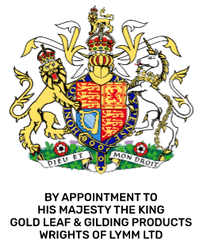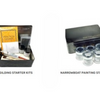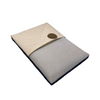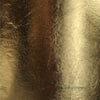Gold Leaf Across the World - Germany
- by Sam Wozniak
Gold Leaf in Germany: History, Gilding Techniques, and Monumental Restoration
Germany has a long and distinguished tradition of using gold leaf (Blattgold) in art, architecture, and craftsmanship. From medieval manuscripts and Baroque churches to modern restoration projects and contemporary design, goldleaf has been a constant symbol of opulence, sacred beauty, and meticulous craftsmanship. Whether using 24 carat gold leaf (24 Karat Blattgold) for its unmatched purity or 23.5 carat gold leaf (23,5 Karat Blattgold) for its balance between brilliance and durability, German gilding (Vergoldung) practices remain among the most respected in the world.
In this article, we’ll explore how gold leaf became a staple of German artistry, how it's used in monumental architecture, and why restoration specialists continue to rely on traditional gilding methods to preserve Germany’s cultural treasures.
The Origins of Gold Leaf in Germany (Blattgold in Deutschland)
The use of gold leaf in Germany dates back to the early Middle Ages, particularly within the context of religious art. Illuminated manuscripts produced in monastic scriptoria often featured delicate applications of 24 carat gold leaf to highlight sacred texts and illustrations. These shimmering pages were not merely decorative but carried spiritual significance, reflecting the divine nature of the written word.
By the Gothic period, goldleaf had become a prominent feature in altarpieces (Altäre), statuary, and ecclesiastical architecture. Germany’s numerous cathedrals and pilgrimage churches began incorporating gilding techniques to create heavenly interiors, often using 23.5 carat goldleaf, which provided exceptional sheen while offering slightly greater resistance to environmental wear.
Gilding and Monumental Church Art (Vergoldung und monumentale Kirchenkunst)
The late medieval and Baroque periods marked a golden age for monumental gilding in Germany. Churches in cities like Munich, Bamberg, and Dresden are home to elaborate high altars and ceiling frescoes richly embellished with gold leaf. In these spaces, gilding served both aesthetic and symbolic purposes, representing divine light and eternal glory.
A prime example is the Frauenkirche in Dresden, where 23.5 carat gold leaf was used extensively in decorative stucco and woodwork. Similarly, the Wieskirche in Bavaria, a UNESCO World Heritage Site, features Rococo interiors saturated with gilded ornamentation, showcasing the intricate craftsmanship of German artists and the importance of religious spectacle.
These monumental works not only exemplified the skill of German gilders (Vergolder) but also reinforced the cultural and political influence of the Church and regional nobility.
Restoration and Preservation of Gold Leaf Art (Restaurierung von Blattgoldkunst)
Today, Germany remains at the forefront of restoration science, particularly when it comes to preserving historic goldleaf applications. Whether in cathedrals, palaces, or public monuments, German conservators rely on time-tested techniques to repair and recreate gilded surfaces with historical accuracy.
Restoration teams often use 23.5 carat gold leaf for its durability and historical authenticity. In projects requiring extreme brilliance — such as sacred artifacts, sculptures, or royal regalia — 24 carat gold leaf is chosen for its unparalleled luster and purity. These restorations are not merely technical but deeply cultural, aiming to protect Germany’s artistic legacy for future generations.
Institutions like the Bayerisches Landesamt für Denkmalpflege (Bavarian State Office for Monument Protection) and various German museums maintain highly specialized teams for the gilding and restoration of goldleaf artworks (Vergoldung und Restaurierung von Blattgold-Kunstwerken).
Modern Applications: From Tradition to Innovation
While much of Germany’s gold leaf tradition is rooted in historical art, modern architects, designers, and artists continue to use goldleaf (Blattgold) in innovative ways. In contemporary interiors, gilding adds a touch of sophistication to ceilings, columns, and furniture. German artisans and boutique studios often incorporate 23.5 carat goldleaf into custom signage, sculptures, and fine leather goods.
In modern art, 24 carat goldleaf has been embraced for its conceptual richness — representing themes of permanence, value, and transcendence. Artists based in Berlin and Leipzig, for example, have incorporated goldleaf into mixed-media works and installations exploring memory, identity, and materialism.
Conclusion: Germany’s Enduring Golden Legacy
The use of gold leaf in Germany (Blattgold in Deutschland) spans over a millennium, touching nearly every era of its cultural development. From sacred manuscripts to monumental gilding in churches and the meticulous restoration of historic artworks, goldleaf remains a symbol of both the divine and the enduring.
Whether 23.5 carat (23,5 Karat) for practical elegance or 24 carat gold leaf (24 Karat Blattgold) for absolute brilliance, Germany’s legacy of gilding continues to evolve — shining just as brightly today as it did centuries ago.






